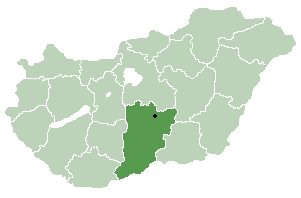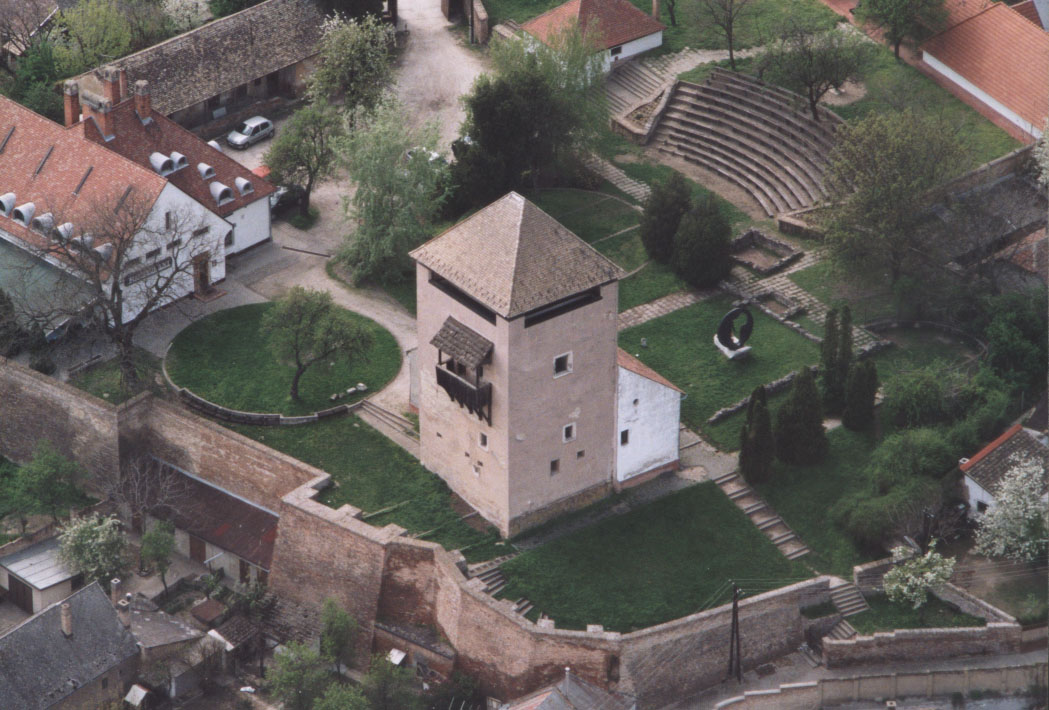|
Gusztáv Léderer
Gusztáv Léderer (July 20, 1893 – November 12, 1926) was a Hungarian army lieutenant and member of Pál Prónay's paramilitary combat unit, and later on, a murderer and possible serial killer. Following the collapse of the Hungarian Soviet Republic, he performed several killings as part of the White Terror, earning a sizeable fortune for himself. Despite this, he continued killing, participating in one of the most scandalous killing of the two World Wars, and possibly others as well. Biography Before the First World War Gusztáv Léderer was born on July 20, 1893 into a small civic Lutheran family in Pozsony (today Bratislava, Slovakia), the son of a military officer János and his wife, Zsuzsanna (née Preisinger). Originally, Léderer planned to pursue a career as a bank clerk, but at the outbreak of World War I, he voluntarily enlisted in the army. After a year of voluntary service, he became acquainted with a young cashier of Styrian origin named Mária Schwartz. A yo ... [...More Info...] [...Related Items...] OR: [Wikipedia] [Google] [Baidu] |
Bratislava
Bratislava (, also ; ; german: Preßburg/Pressburg ; hu, Pozsony) is the Capital city, capital and largest city of Slovakia. Officially, the population of the city is about 475,000; however, it is estimated to be more than 660,000 — approximately 140% of the official figures. Bratislava is in southwestern Slovakia at the foot of the Little Carpathians, occupying both banks of the River Danube and the left bank of the Morava (river), River Morava. Bordering Austria and Hungary, it is the only national capital that borders two sovereign states. The city's history has been influenced by people of many nations and religions, including Austrians, Bulgarians, Croats, Czechs, Germans, Hungarian people, Hungarians, Jews, Romani people, Romani, Serbs and Slovaks. It was the coronation site and legislative center and capital of the Kingdom of Hungary from 1536 to 1783; eleven King of Hungary, Hungarian kings and eight queens were crowned in St Martin's Cathedral, Bratislava, St Martin' ... [...More Info...] [...Related Items...] OR: [Wikipedia] [Google] [Baidu] |
Styria
Styria (german: Steiermark ; Serbo-Croatian and sl, ; hu, Stájerország) is a state (''Bundesland'') in the southeast of Austria. With an area of , Styria is the second largest state of Austria, after Lower Austria. Styria is bordered to the south by Slovenia, and clockwise, from the southwest, by the Austrian states of Carinthia, Salzburg, Upper Austria, Lower Austria, and Burgenland. The state capital is Graz. Etymology The March of Styria derived its name from the original seat of its ruling Otakar dynasty: Steyr, in today's Upper Austria. In German, the area is still called "Steiermark" while in English the Latin name "Styria" is used. The ancient link between Steyr and Styria is also apparent in their nearly identical coats of arms, a white Panther on a green background. Geography * The term "Upper Styria" (german: Obersteiermark) refers to the northern and northwestern parts of the federal-state (districts Liezen, Murau, Murtal, Leoben, Bruck-Mürzzuschlag). * ... [...More Info...] [...Related Items...] OR: [Wikipedia] [Google] [Baidu] |
Orgovány
Orgovány is a village in Bács-Kiskun county, in the Southern Great Plain region of southern Hungary. Geography It covers an area of and had a population Population typically refers to the number of people in a single area, whether it be a city or town, region, country, continent, or the world. Governments typically quantify the size of the resident population within their jurisdiction using a ... of 3,368 in 2015. References Populated places in Bács-Kiskun County {{Bacs-geo-stub ... [...More Info...] [...Related Items...] OR: [Wikipedia] [Google] [Baidu] |
Tahitótfalu
Tahitótfalu is a village in the northern part of , Hungary. The Danube of Szentendre separates into two parts, one of these is Tótfalu which laying on Szentendre Island the other one is Tahi at the foothills of Visegrád Mountains, 28 kilometers from Budapest, north of Szentendre Szentendre () is a riverside town in Pest County, Hungary, between the capital city Budapest and Pilis Mountains, Pilis-Visegrád Mountains. The town is known for its museums (most notably the :hu: Szentendrei Szabadtéri Néprajzi Múzeum, Open- ..., along Highway 11. References Populated places in Pest County {{Pest-geo-stub ... [...More Info...] [...Related Items...] OR: [Wikipedia] [Google] [Baidu] |
Bölcske
Bölcske is a village in Tolna County Tolna ( hu, Tolna megye, ; german: Komitat Tolnau) is an administrative county (Comitatus (Kingdom of Hungary), comitatus or megye) in present Hungary as it was of the former Kingdom of Hungary. It lies in central Hungary, on the west bank of the ..., Hungary. References Populated places in Tolna County {{Tolna-geo-stub ... [...More Info...] [...Related Items...] OR: [Wikipedia] [Google] [Baidu] |
Előszállás
Előszállás (german: Neuhof) is a village in Fejér County, Hungary. Name Előszállás was first mentioned in written sources in a 1537 record as ''Elevzallas'' (and as ''Ellő Szállás'' in 1740, ''Elő-Szállás'' in 1785, and ''Ellö-szálas'' in 1805).''Magyar nyelvjárások'' 23 (1980), p. 66. The name is probably of Cuman origin; the westernmost settlement of the Cumans was located here. The village was known as ''Neuhof'' in German. History Előszállás and the surrounding areas were occupied before the Romans. Celtic, Avar, and Roman artifacts have been found here. At the beginning of the 16th century, the provost of Fehérvár had an estate here. Later it became the property of the Sulyok family (Balázs, István, and György Sulyok). After this it was a property of Várpalota Várpalota (; German: Burgschloß) is a town in Western Hungary, in the Transdanubian county of Veszprém (county), Veszprém. It was a mining town during the Socialism, Socialist era, ... [...More Info...] [...Related Items...] OR: [Wikipedia] [Google] [Baidu] |
Kecel
Kecel is a town in Bács-Kiskun county, in southern Hungary. Croats in Hungary call this town ''Kecelj''. History The first documents mentioning Kecel date back to 1198. Like many other Hungarian towns, Kecel has lost its population during the Turkish Conquest. On April 22, 1734 Gábor Patachich, the bishop of Kalocsa issued papers reestablishing the town of Kecel. At the time, most people made their living by herding. However, the rising population made this extremely hard, so people committed themselves to farming which still remains the main industry in Kecel. In 1802 a number of new buildings were built including: the Roman Catholic church, the Town Hall, the first school, post office, and the police and fire stations. The railroad also reached Kecel. Kecel received town rights in 1993. The town was served by the Kiskőrös–Kalocsa railway line, operated by MÁV, until its closure in 2007. The Pintér Művek Military Museum and Park (), which houses a large collectio ... [...More Info...] [...Related Items...] OR: [Wikipedia] [Google] [Baidu] |
Dunaföldvár
Dunaföldvár is a town in Tolna County, Hungary. Residents are Hungarians, with minority of Serbs. A Bronze Age gold hoard of jewellery was found between Paks and Dunaföldvár on the banks of the Danube in the nineteenth century. The treasure is now in the collections of the British Museum. Dunaföldvár boasts a number of historical heritages, the most important of which, after the castle, are its churches and chapels. Dunaföldvár, on the bank of the Danube, was an important settlement at the time of the Hungarian conquest, and experienced its golden age during the 14th and 15th centuries. It was first mentioned in the work of the Turkish chronicler Sinan Chaus, who described the history of the 1543 expedition. However, the castle was destroyed in the autumn of 1686 after it was set ablaze by Turkish troops. In 1703, the legendary Kuruc general, General János Bottyán, occupied the castle, which became famous as the bridgehead of the Transdanubian campaign. The castle wa ... [...More Info...] [...Related Items...] OR: [Wikipedia] [Google] [Baidu] |
Szatymaz
Szatymaz is a village in Csongrád county, in the Southern Great Plain region of southern Hungary. The village lies 12 kilometers northwest of Szeged, neighboring Lake Fehér, a part of Kiskunság National Park. Szatymaz is accessible via the M5-Motorway, and by rail via Szeged-Budapest train lines, including the Intercity trains which pass through the village. History The area around Szatymaz has been inhabited since the early Bronze Age (2500–1700 B.C.). Archaeological remains of settlements dating from the time of the Pannonian Avars, and the early Kingdom of Hungary have been found in Szatymaz and its surroundings. The name "Szatymaz" likely derives from an old Cuman family name. Szatymaz was first mentioned in writing as a location on a 1676 Hapsburg map, which identified it as a postal stop between Szeged and Kistelek. During the first half of the 18th century, inhabitants of Szeged bought land, and built small buildings around the postal stop to be used for agricul ... [...More Info...] [...Related Items...] OR: [Wikipedia] [Google] [Baidu] |
France
France (), officially the French Republic ( ), is a country primarily located in Western Europe. It also comprises of Overseas France, overseas regions and territories in the Americas and the Atlantic Ocean, Atlantic, Pacific Ocean, Pacific and Indian Oceans. Its Metropolitan France, metropolitan area extends from the Rhine to the Atlantic Ocean and from the Mediterranean Sea to the English Channel and the North Sea; overseas territories include French Guiana in South America, Saint Pierre and Miquelon in the North Atlantic, the French West Indies, and many islands in Oceania and the Indian Ocean. Due to its several coastal territories, France has the largest exclusive economic zone in the world. France borders Belgium, Luxembourg, Germany, Switzerland, Monaco, Italy, Andorra, and Spain in continental Europe, as well as the Kingdom of the Netherlands, Netherlands, Suriname, and Brazil in the Americas via its overseas territories in French Guiana and Saint Martin (island), ... [...More Info...] [...Related Items...] OR: [Wikipedia] [Google] [Baidu] |
Röszke
Röszke is a village in Csongrád county, in the Southern Great Plain region of southern Hungary. The nearest town is Szeged . Sándor Rózsa, the legendary Hungarian bandit was born here in 1813. Geography It covers an area of and has a population of 3091 people (2013). Border crossing A major road border crossing on Hungary's M5 motorway into Serbia is located from the village. On the other side of the border in Serbia the first settlement is Horgoš where the E75 in Serbia begins. During the European migrant crisis, the village served as a refugee camp for refugees. Notable residents * Sándor Rózsa (1813 – 1878), Hungarian betyár The betyárs ( Hungarian: ''betyár'' (singular) or ''betyárok'' (plural)), were the highwaymen of the 19th century Kingdom of Hungary. The "betyár" word is the Hungarian version of "Social Bandit".Shingo MinamizukaA social bandit in nineteen ... ('' en, outlaw'') Gallery File:Röszke főtér.jpg, Central square of Röszke File:Mű ... [...More Info...] [...Related Items...] OR: [Wikipedia] [Google] [Baidu] |
Tisza
The Tisza, Tysa or Tisa, is one of the major rivers of Central and Eastern Europe. Once, it was called "the most Hungarian river" because it flowed entirely within the Kingdom of Hungary. Today, it crosses several national borders. The Tisza begins near Rakhiv in Ukraine, at the confluence of the White Tisa and Black Tisa, which is at coordinates 48.07465560782065, 24.24443465360461 (the former springs in the Chornohora mountains; the latter in the Gorgany range). From there, the Tisza flows west, roughly following Ukraine's borders with Romania and Hungary, then shortly as border between Slovakia and Hungary, later into Hungary, and finally into Serbia. It enters Hungary at Tiszabecs. It traverses Hungary from north to south. A few kilometers south of the Hungarian city of Szeged, it enters Serbia. Finally, it joins the Danube near the village of Stari Slankamen in Vojvodina, Serbia. The Tisza drains an area of about and has a length of Its mean annual discharge is seas ... [...More Info...] [...Related Items...] OR: [Wikipedia] [Google] [Baidu] |




